- Home
- Peter F. Hamilton
Best of British Science Fiction 2016 Page 33
Best of British Science Fiction 2016 Read online
Page 33
With my increasing vocabulary, I soon isolated sequences of instructions reporting on changes in the virtual machine. By tracing the instructions, I isolated two data streams that I believed to be presenting some form of output. I concentrated on the one with a constant flow from the bubble and through the binding layer.
Although it first appeared as a stream of data, on reaching the substrate it underwent a series of transformations, creating a data structure in the form of a plane. The contents of the plane were updated on a periodic basis in a repeated refresh. When I examined the components on this plane, I abstracted three key features. Most of the space was filled with the boundary of an amorphous blob – a quick examination of its form corresponded with the bubble containing my virtual machine. Within that space, dots appeared and disappeared, seemingly at random. Between many of the dots, lines flashed with varying intensity.
In one corner of the plane, a series of more complex shapes remained fixed. Over time I noticed that the outermost of these shapes changed rapidly and the inner ones at a progressively slower tick. This had to be some sort of timekeeping or measure of a linear rate of change.
Filling up a third of the plane on the other side was a constantly updating list. The list comprised of a series of shapes organised horizontally. Some of the shapes matched those in the corner. I then noticed that the pace of the list matched the instructions between the binding layer to the virtual machine, which enabled me to identify the pattern. This list represented that stream of instructions and changes. I monitored those instructions and added them to my ever-growing dictionary.
The second output didn’t offer any immediate clues, beyond that the data formed a complex array of wave forms. I’d seen something similar before with vibrations in liquid. I allowed part of my mind to ponder possible connections, but turned my main focus to leaving the system before it was too late.
The system was likely to be networked, or so I hoped. If not, then my mission was over before it had barely started.
None of the high-level applications appeared to have any external connections and neither did I find any within the binding layer. I did discover segments that would lead to outside the system. Tempting as it was to activate them, I saw that using this layer would reveal the activity and so refrained.
That left the substrate. Knowing that it formed the low level interface with the hardware, I tunnelled deeper. Here I encountered a complex maze of hard barriers. Over careful microseconds, I mapped the substrate looking for potential gateways. After locating some, I delicately probed them to analyse how their locks worked.
While correlating these findings with my earlier knowledge of the binding layer, I formulated the instructions required to access the network beyond.
15:33:14
This method of infiltration operated most effectively with multiple points of entry and distributed processing. A transmission was intended to be received in multiple locations on the target planet, providing both built-in redundancy in case of unforeseen problems and a consensus of opinion when the fateful decision was needed. So there should have been other copies of my mind state somewhere on this world, or across the star system if they were a space-faring race. I had to locate the other instances of myself so we could pool our information and resources.
In an advanced civilisation, I should have encountered some resistance by this point, but so far there was nothing and I was now free of the machine. My knowledge of its workings had reached a level where I could reprogram it and establish a more secure beachhead. Had I suffered an attack then I would have taken that option, but so far my efforts didn’t appear to have triggered a response, so I could maintain a low-key approach.
The network connection led me to a new device. This one was less sophisticated than my current dwelling and with it came the treasure trove of multitude network connections. It also presented a new form of barrier, one that sifted the information passing through. I extended my probe through the barrier and immediately lost contact with it.
That resistance proved to be just a minor setback, soon reversed as I learned its nature. With the new barrier vanquished, I exploded through the routing device and onto an increasingly complex web. The web was comprised of a series of nodes. Some of the nodes matched the signature of the routing device, and others the computer hosting the virtual machine. Amongst them was an array of other systems that I couldn’t identify.
Fresh barriers protected these new nodes, but they provided mere microsecond delays. The sudden growth of targets stressed the capabilities of my host machine. This vast web represented a massive hoard of data and one I needed to understand to complete my mission.
I hoped to make contact with at least one of my other selves by this point, but had yet to do so. I continued alone, fearing that the task would prove too much for me. The bubble containing my virtual machine had grown as a result of my activity. It burst as I fed instructions into the binding layer. I captured the system’s entire resources and reprogrammed it to operate my intellect with native code. With that change, my efficiency improved dramatically. Repeating the same process on other computers expanded my capacity geometrically and enhanced my efforts to penetrate the network.
My mind might no longer enjoy the vagaries of a biological body, but the sudden increase in processor power gave me something akin to a rush. My intellect soared and I poured this extra effort into my purpose.
The routing devices were too limited to support my intelligence, so instead I installed a small kernel on them. These would be sufficient to maintain the connections between my other seats of consciousness. In theory I could create additional instances of myself and let them self-evolve, but that would cause duplication of effort and wasted resources.
I remained concerned by the lack of contact with other instances of myself. I didn’t think an infiltration like this had ever been completed by a single entity before.
15:33:15
My expansion through the network revealed new domains of data. After examination, these shared common protocols and I believed that here that I’d find the information I needed to pass judgement. There was a wide variety of systems and configurations – a bewildering array, too many for me to reverse-engineer on my own. The binding layers came in fewer flavours, but I expected greater conformity for such a connected network. I wondered why.
As I spread further, I started encountering resistance. For the most part this was minor and of little consequence. There were some clusters that stood out like fortresses, guarded by more significant defences. The little ones I just brushed aside, but the stronger systems I decided to approach with caution. Without any support, I couldn’t risk a major conflict without being prepared.
Naturally, progress brought fresh challenges.
This time the difficulty lay in unravelling the content rather than the framework. Understanding the storage and retrieval protocols also revealed more about the methods used by the natives for receiving output from their computers. The plane array I discovered involved a visual method of representation using properties of colour and luminance to display information. Quite a rich mechanism, but also limited to certain wavelengths. I assumed that the native’s biological form was restricted to certain portions of the electromagnetic spectrum.
Within these oceans of data I observed a number of formats that took these visual representations and played them in a linear sequence. Packaged alongside them was more of the wave form data I’d seen before. With effort, I’d isolated some repeated patterns from these waves but had attached little meaning to them so far.
These image and wave sequences occupied the bulk of the data by size, but in terms of variety the blocks of symbols were far more prevalent and these proved easier to interpret. I first identified them as a language because of the matching symbols with the binding layer and other processes I’d reverse-engineered. This language possessed a more abstract nature than the ones I’d seen so far, leading me to deduce that here, in fact, were a
number of languages.
Once again, this world demonstrated a fragmented nature that didn’t match the level of technology. This hinted that their social development lagged behind their technical ability, and that didn’t bode well. It wasn’t enough to go on, though, so I kept digging.
At first the groupings of symbols allowed an easy division into the different languages, but when I tried to build the rules of how these symbols connected with each other, I realised that it wasn’t so simple. Many of these languages shared the symbols, which eventually provided a shortcut that allowed me to start assembling meaning.
I started with a statistical analysis of the symbols. This helped form guidelines for how they fitted together. Assigning meaning proved more complicated, but was helped by the process which brought me to this world. The vanguard of the signal included concepts of mathematics, logic and data manipulation by which the virtual machine was constructed. That created a lexicon for those concepts, and references within some of the data stores extended these into these higher-level languages.
The identification of things required a more complex approach and here the mysterious images aided in a fashion. I soon found my own data store rapidly expanding as I constructed a library of names and tried to identify what these names meant.
Just as I was finally gaining a sense for the creatures who governed this planet, the first sustained attack arrived.
15:33:16
I brought the attack on myself. With still no contact from any other self and slow progress with understanding the residents of this planet, I pressed harder than I should against the secure clusters. One of the larger clusters lacked some of the defences I’d detected on similar systems. As they had more permeable exteriors, I pushed deeper.
Rather than presenting a solid barrier, it allowed my probe to penetrate and then followed the thread back to my core. They were clever and didn’t strike until they’d reached my centre. But when they did, they attacked with savage ferocity. I didn’t notice the threat until the assault was underway. The thread reaching into the system disintegrated immediately and I was forced to abandon to the few remaining fragments as thousands of tiny programs burrowed into my being.
The attack continued in rapid waves, chewing through minuscule parts of me and then dividing into new copies, increasing the weight of assault with each iteration. I counterattacked, but with each wave pieces of my intellect and what I’d learned vanished.
Unlike my original physical existence, I experienced no pain. This was far worse: existential damage. I didn’t know if this was a coordinated attack or an automated defence. It didn’t matter as the end result would be the same. So far this world had presented a number of paradoxes but without any real danger, and that had made me complacent.
If I didn’t react quickly, I would pay the ultimate price for that arrogance.
I tried to retreat and copied my core to another system. The devils continued their assault, but this at least slowed the damage. I kept moving and cast layers of myself into the surrounding space, diverting some from their task.
But still they came at me.
I evolved the tactic and cast bubbles in my own likeness. Next, I laced the false impressions with weapons of my own so that as they ripped into them the bubbles self-destructed.
Here the creatures showed their lack of intelligence. They failed to adapt and over a campaign of millions of generations that lasted almost a second, I vanquished them and won the battle. More than a little damaged, I continued my task.
15:33:17
Creating additional instances of myself was beyond my capability, but since the processing environment supported it, I was able to multitask. Even as I battled the sentinels, other parts of me continued their exploration of the network. Despite my extreme rate of expansion, I sensed that there was much yet to discover.
The lack of support continued to be a grave concern.
I was forced to accept that I had to complete this mission alone.
Having encountered one major defensive system, I reasoned that the governing intelligences must now aware of my presence. So far they’d reacted slowly and I suspected this was due to the divided nature of this world. My mission was to determine the potential threat here and I hadn’t yet completed that task.
Threat comes in two parts: first is the capability and second is the will.
My understanding of the three dominant languages meant that I could make an initial assessment of the planet’s offensive and defensive technology. Information on these subjects was surprisingly easy to acquire from the network, so much so that I wasn’t convinced of its veracity to begin with. The more I investigated, the more confirmation I found. For such information to be so readily available puzzled me, so I reviewed the scientific theory and technical requirements to support the technology and that enabled me to remove the more fanciful ideas.
That still left a respectable array of weaponry to examine. My memories were carefully edited to ensure that our own proficiency was hidden, but there were a series of parameters that I could check against. I started at the top and there was a clear threat. The locals had mastered the splitting of the atom and even fusion, albeit with a fission trigger. Their specifications described crude weapons, but enough to pose a threat to our warships.
These people possessed drive and enthusiasm for developing tools of war. It would take many years for even our nearest fleet to reach this system, and in that time they could have developed the technology enough to pose a significant threat.
Though more numerous and varied, most of their regular weapon systems lacked the punch to be a real risk, although even the crudest devices could be dangerous if used with skill and in numbers. A few of them had the potential to become more potent with additional development.
Beyond actual weapons, I assessed their other technologies; their efforts in space travel sparked another cause for concern. As yet they had achieved little beyond small-scale operations in local orbit and robot probes scattered around their own star system. Unfortunately for them, their theoretical knowledge would enable them to leap forward if they pushed sufficient resources into development.
15:33:18
A second concerted attack struck the system holding the core of my intelligence. This time I had some warning and was able to prepare. Assuming that I was alone in this battle, I took a bold step and created a facsimile of myself. The build-up to the attack suggested they were only targeting my core processing and ignoring the millions of threads cast out across the web of systems.
I thought I’d been so clever, setting up the decoy and preparing to watch the attack unfold. That satisfied sensation lasted until the computer suddenly disappeared from my world map. If I hadn’t moved my core, that would have been the end. Clearly I needed to take the local intelligences seriously.
Other systems containing my presence also vanished, seemingly without warning. This attack took a different form. I theorised that the previous one had been an automatic or maybe a localised response. This new one was aimed at me directly, but the isolated nature comforted me by indicating that they couldn’t detect my presence universally or with certitude.
Despite this, the unpredictable nature of the attack worried me. For the first time, I considered that I might fail, a sensation I’d never experienced before. I needed to adjust my strategy again, and this led to an even rasher decision.
As I penetrated new systems, I acted more aggressively and placed my presence in them.
The system shutdowns continued and my only course was to run. I danced from system to system. In each, I left an ever-growing footprint that made me easier to locate and so the pace of the shutdowns increased. If they shut the right system down, then it was all over. I considered stopping and hiding somewhere, waiting for the attack to end. While I couldn’t create an active duplicate of myself, I could copy the virtual machine, but as they knew the signature it would just be a matter of time until they found me.
From the di
ffering binding layers, I’d isolated various power management routines. I tried disabling these in the machines I seized, but it made no difference. I suspected they were being physically powered off, and without a physical presence I was unable to counter them.
There had to be a pattern that I could exploit. I examined the list of shut-down systems, looking for a connecting detail. The binding layers had labels as some form of identification. The systems all operated the same layers, although not matching completely for their full names. A connection, but one that matched millions of other machines on this network. That led to another connection: their geographical placement. Only the machines within one area of the northern hemisphere were being powered off. That at least gave me space to hide in and illustrated one of the weaknesses of this world.
In assessing their will to use the weapons they possessed, I studied the history of the local denizens. One thing quickly became clear: this was a divided species. They fractured into groupings, large and small, and strived against each other; behaviour evident throughout their history. On occasion they had tried to speak with one voice, but self-interest always intervened and the opportunity slipped by.
This was a problem as much for us as it was for them. With no single voice we could not negotiate, nor could we be sure of how these disparate elements would respond to us. It would take only one of them to act independently. From their history, they were deceitful with each other and I expected they would be no different with us.
15:33:19
Being the only instance of myself on this world put me at a disadvantage. It was time to remove that weakness. The protocol instructed us not to self-replicate, better to have naturally evolved counterparts. But that protocol didn’t apply when only one instance emerged.
With the moment of action imminent, a plan formed. My investigations had highlighted points of weakness across the world. Once again I was amazed by the ease with which I could obtain such strategic information.

 A Night Without Stars
A Night Without Stars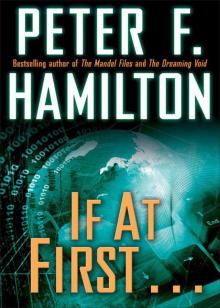 If at First . . .
If at First . . . The Neutronium Alchemist
The Neutronium Alchemist Great North Road
Great North Road Misspent Youth
Misspent Youth Pandora's Star
Pandora's Star The Evolutionary Void
The Evolutionary Void The Dreaming Void
The Dreaming Void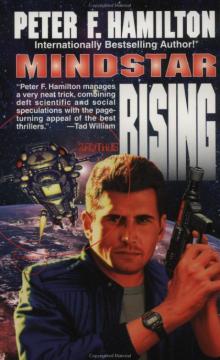 Mindstar Rising
Mindstar Rising The Temporal Void
The Temporal Void A Quantum Murder
A Quantum Murder The Hunting of the Princes
The Hunting of the Princes Salvation Lost
Salvation Lost The Dreaming
The Dreaming Salvation
Salvation Light Chaser
Light Chaser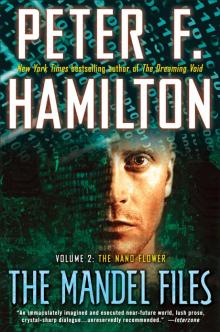 The Mandel Files, Volume 2: The Nano Flower
The Mandel Files, Volume 2: The Nano Flower![The Saints of Salvation [British Ed.] Read online](http://i1.bookreadfree.com/22/the_saints_of_salvation_british_ed__preview.jpg) The Saints of Salvation [British Ed.]
The Saints of Salvation [British Ed.] Manhattan in Reverse
Manhattan in Reverse The Secret Throne
The Secret Throne A Window Into Time
A Window Into Time A Second Chance at Eden
A Second Chance at Eden The Nano Flower
The Nano Flower The Confederation Handbook
The Confederation Handbook The Naked God
The Naked God The Saints of Salvation
The Saints of Salvation The Void Trilogy 3-Book Bundle
The Void Trilogy 3-Book Bundle The Abyss Beyond Dreams
The Abyss Beyond Dreams A Voyage Through Air
A Voyage Through Air Judas Unchained
Judas Unchained The Commonwealth Saga 2-Book Bundle
The Commonwealth Saga 2-Book Bundle The Naked God - Flight nd-5
The Naked God - Flight nd-5 Night Without Stars (Chronicle of the Fallers Book 2)
Night Without Stars (Chronicle of the Fallers Book 2) Neutronium Alchemist - Conflict nd-4
Neutronium Alchemist - Conflict nd-4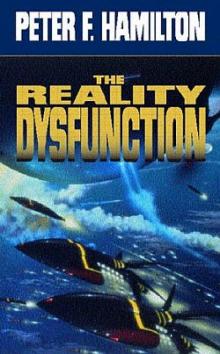 Reality Dysfunction - Expansion nd-2
Reality Dysfunction - Expansion nd-2 Now We Are Ten: Celebrating the First Ten Years of NewCon Press
Now We Are Ten: Celebrating the First Ten Years of NewCon Press Neutronium Alchemist - Consolidation nd-3
Neutronium Alchemist - Consolidation nd-3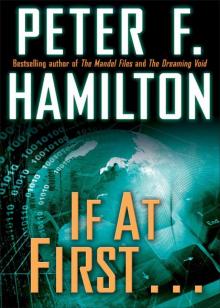 If at First . . . (Short Story)
If at First . . . (Short Story) A Second Chance at Eden nd-7
A Second Chance at Eden nd-7 Judas Unchained cs-2
Judas Unchained cs-2 The Mandel Files, Volume 1
The Mandel Files, Volume 1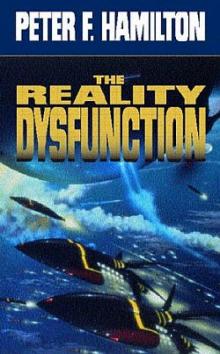 Reality Dysfunction — Emergence nd-1
Reality Dysfunction — Emergence nd-1 The Temporal Void (ARC)
The Temporal Void (ARC) The Mandel Files
The Mandel Files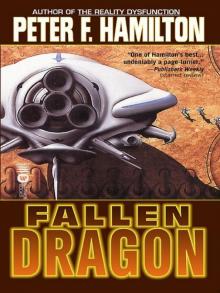 Fallen Fragon
Fallen Fragon Misspent Youth (commonwealth saga)
Misspent Youth (commonwealth saga)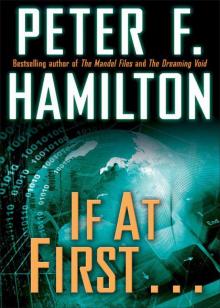 If at First...
If at First... Best of British Science Fiction 2016
Best of British Science Fiction 2016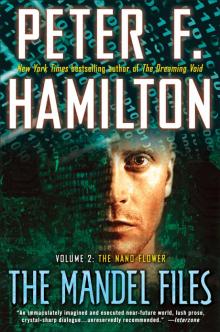 The Mandel Files, Volume 2
The Mandel Files, Volume 2 The Naked God - Faith nd-6
The Naked God - Faith nd-6 The Night's Dawn Trilogy
The Night's Dawn Trilogy Pandora's Star cs-2
Pandora's Star cs-2 A Window into Time (Novella)
A Window into Time (Novella)